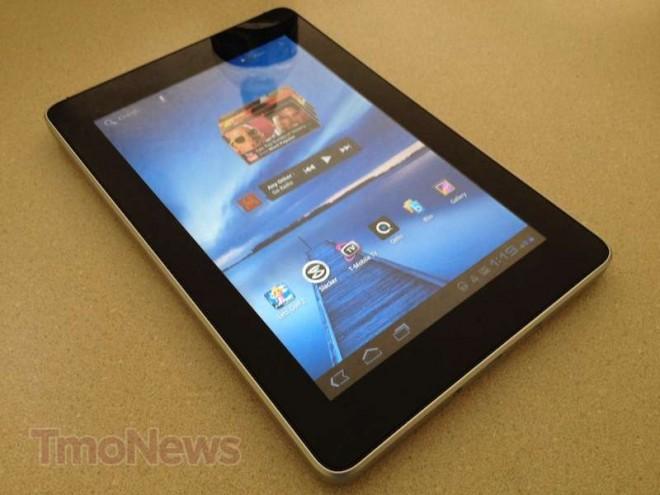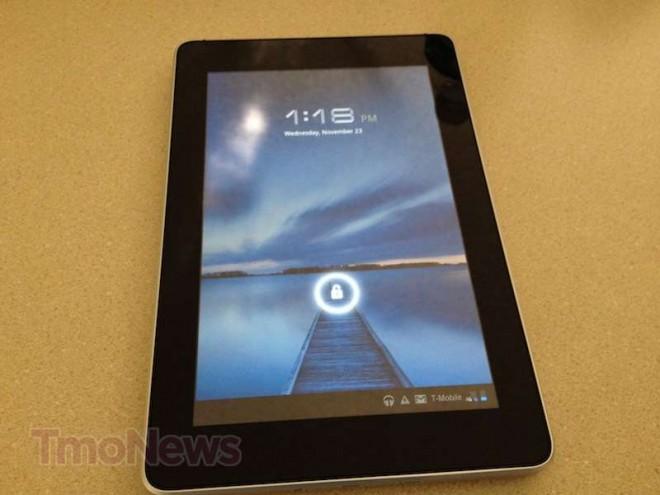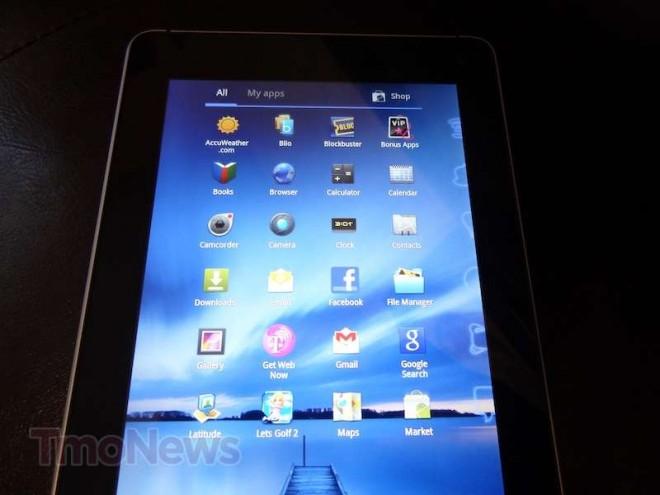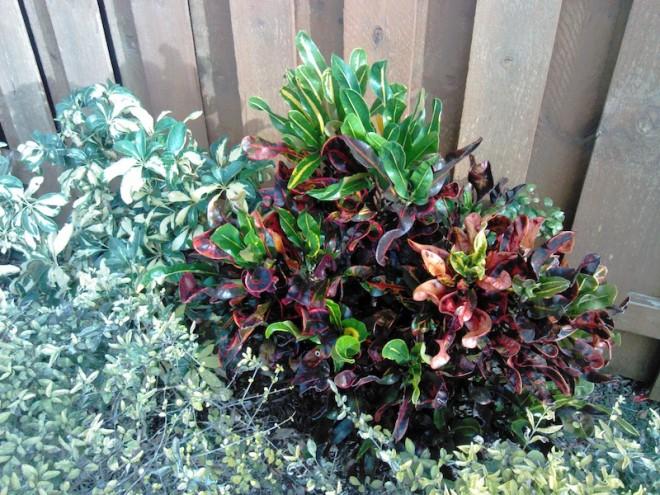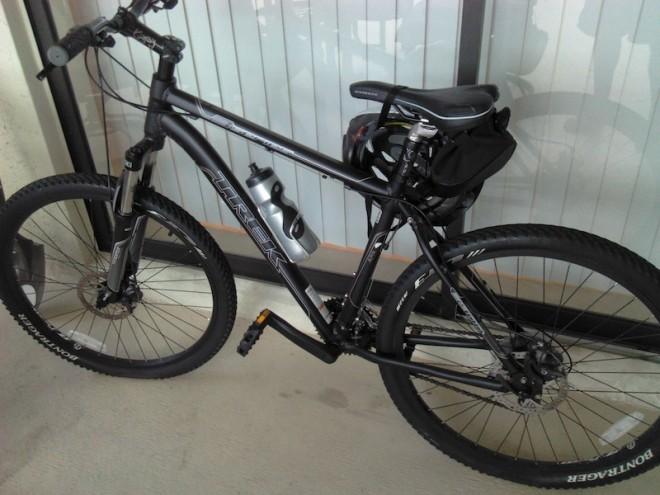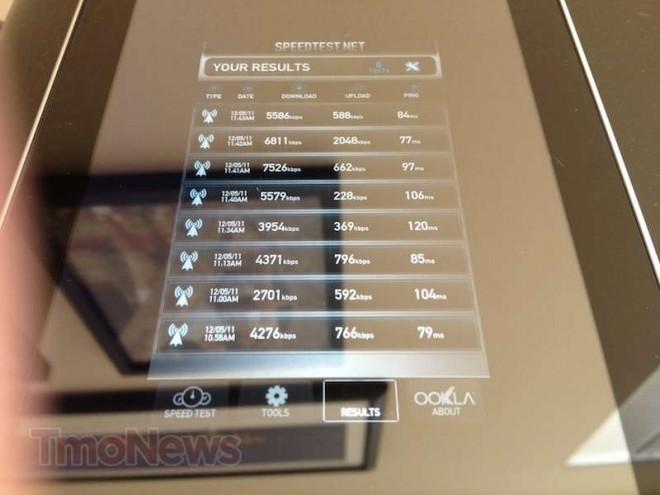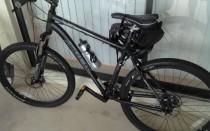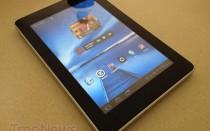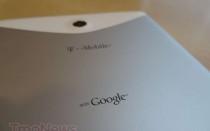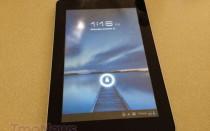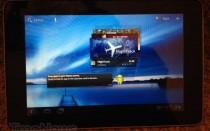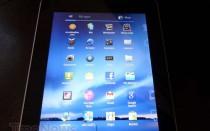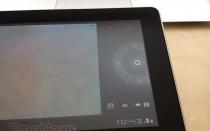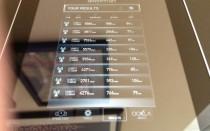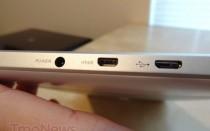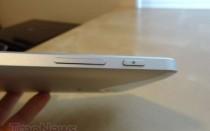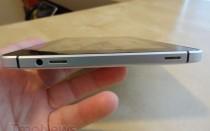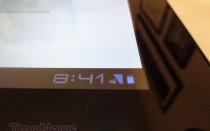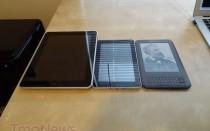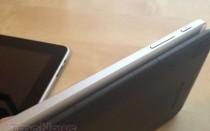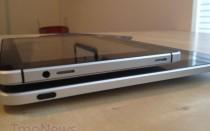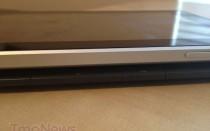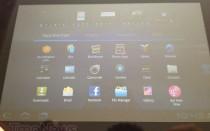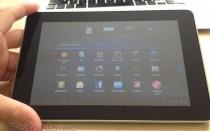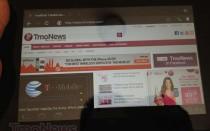TmoNews Reviews The T-Mobile Springboard 7″ Tablet
For a long time I was set in my mind that the 10” size of the iPad was the perfect size for a tablet. To some extent, I still believe that but having spent close to three weeks with the T-Mobile Springboard, I can safely say that 7” tablets have won a special place in my heart. It’s obvious right away that the screen size will lead to a different experience altogether when you come from a larger-sized tablet and that’s both a good and bad thing. For one, the portability of a 10” is already impressive but the portability of a 7” tablet is damn near awesome. If you have larger pockets inside your jacket, you just might be able to slip the Springboard into one. You won’t achieve that with an iPad or a Galaxy Tab 10.1.
It helps to preface any review with the idea that the Springboard is the least expensive tablet in T-Mobile’s lineup. With that in mind, are you getting a lesser experience than you would with a more expensive tablet? Generally speaking, I don’t think so and I never felt that this tablet was “inferior” to other tablets I’ve tested as of late. At $180 dollars on a two-year contract, the pricing appears awesome for a tablet capable of using T-Mobile’s 4G network. It’s once you dig a little deeper into the pricing that the Springboard becomes a real value proposition. I’ll get into the pricing scheme a little later but let’s get back to the review.
Specifications:
- 1280×800 TFT with IPS
- 7″ HD touchscreen
- 16GB built-in memory, expandable to 32GB with microSD card
- 1GB RAM
- HSPA+ speeds up to 14.4Mbps
- 5 megapixel rear camera
- 1.3 megapixel camera
- 1.2GHz dual-core processor
- Android 3.2 Honeycomb
- 14.1 oz
- 7.48″ x 5.08″ x 0.41″
- 7 hours of battery life, 12 hours of standby
- 4100mAh battery
Pros:
- Awesome 7″ size
- 4G capability
- Great 7″ IPS TFT display
- Good viewing angles
- Solid well-made feel
Cons:
- Confusing pricing
- Occasionally sluggish while running multiple apps
- OK camera
- Soft audio performance
- IPS display isn’t ready for the sun
Hardware:
The Springboard feels well made and very solid with silver aluminum and white plastic used on the back of the device. The Springboard is thin at 10.5mm “thick” and it weighs in at 0.93 pounds so it definitely won’t weigh you down. The buttons are made of metal and they include a volume rocker and a lock/power key on the right side if you’re holding the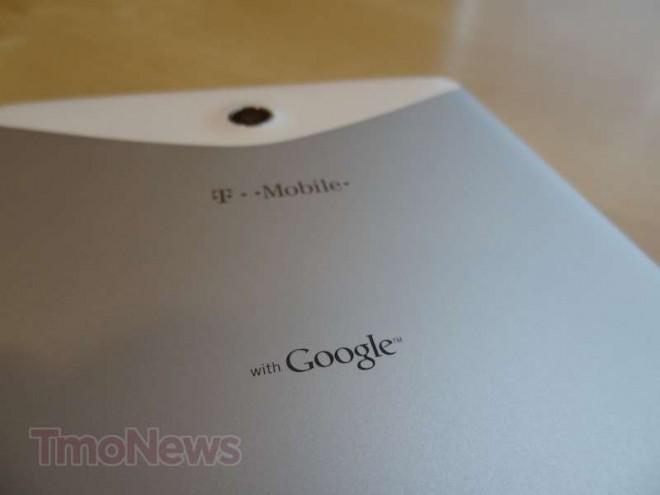 Springboard in portrait mode (front-facing camera on top). The bottom of the device holds the twin speakers along with the 3.5mm headset jack, micro-HDMI port, micro-USB and power port. The left side of the tablet is completely metal with no buttons.
Springboard in portrait mode (front-facing camera on top). The bottom of the device holds the twin speakers along with the 3.5mm headset jack, micro-HDMI port, micro-USB and power port. The left side of the tablet is completely metal with no buttons.
The 1280×800 IPS display doesn’t disappoint on the Springboard. Images and text alike look amazing on it, colors are vibrant and the viewing angles are very good. Like most tablets and smartphones, the Springboard didn’t have any real success under the glare of the sun, even at full brightness. It wasn’t unusable outside but seeing as how a 4G connection means we are more than likely to take this with us on long or short trips, we hope technology allows for a color screen that can shrug off the sun’s evil glare in the near future.
Audio on the Springboard isn’t anything to write home about but I haven’t met a tablet that really blows me away with audio quality. The sound was loud enough to comfortably watch YouTube videos and listen to music while browsing away. If you are going to be listening to any kind of music playback, a pair of headphones is probably ideal.
The Quadrant Benchmark score I received was generally around the 1800 mark which isn’t the best we’ve seen tablets score but it certainly was not the worst performing tablet out there.
Software:
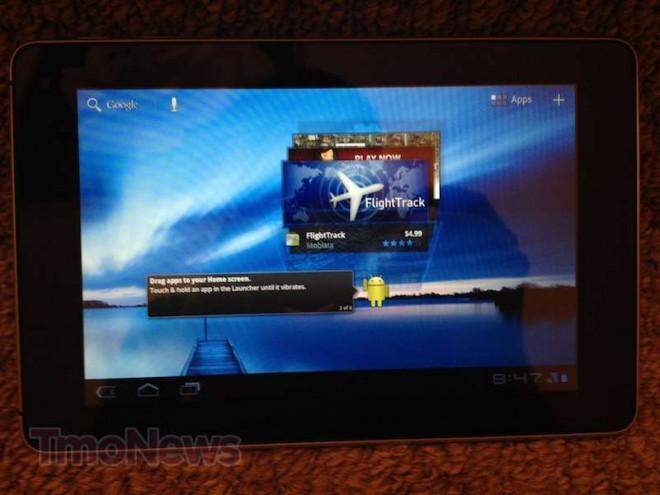 If you’ve used one Android 3.2 Honeycomb tablet, you’ve used them all. Ok, maybe it isn’t so black and white but the Springboard is pretty much a stock version of Honeycomb as Huawei, for better or worse, didn’t add much customization. However, Huawei did add a whole lot of widgets to the 5 homescreens. Thankfully, you can remove and replace them as you wish. T-Mobile does add a few of their MobileLife family organizer widgets including a calendar and shopping list.
If you’ve used one Android 3.2 Honeycomb tablet, you’ve used them all. Ok, maybe it isn’t so black and white but the Springboard is pretty much a stock version of Honeycomb as Huawei, for better or worse, didn’t add much customization. However, Huawei did add a whole lot of widgets to the 5 homescreens. Thankfully, you can remove and replace them as you wish. T-Mobile does add a few of their MobileLife family organizer widgets including a calendar and shopping list.
The Springboard responds very well to the touch thanks to its 1.2GHz dual-core processor and 1GB of RAM. I didn’t find much in the way of slowdowns when attempting to push the Springboard to its limit by using multiple applications. At some point, applications would open noticeably slower than they would after I killed everything running but they were not so slow as to interrupt the user experience.
The Springboard comes with Swype as the default keyboard, though you can easily switch to the default Android option if you wish. As usual, I find Swype to be a mixed bag. It’s awesome when it comes to conversational text but a little more infuriating when it comes to password input so I find myself just finger pointing individual text letters. I suppose it isn’t all that frustrating in the grand scheme of things.
The Springboard comes preloaded with Let’s Golf 2, Blockbuster, Blio, Zinio, Quickoffice, Netflix, T-Mobile TV, Qik, TeleNav GPS, Lookout Security office and a few other pre-installed software applications. The Facebook app which was billed as an actual app when the tablet was first announced is really just a browser shortcut. C’est la vie.
All in all, the Springboard is very much like any other Android 3.2 Honeycomb tablet on the market that isn’t cluttered with manufacturer “additions.” It’s a fine experience but we can’t help and mention that with Ice Cream Sandwich on the horizon we truly believe that a better tablet experience awaits when it arrives. We hope the Springboard will receive an update in the future but Huawei hasn’t indicated anything.
Camera:
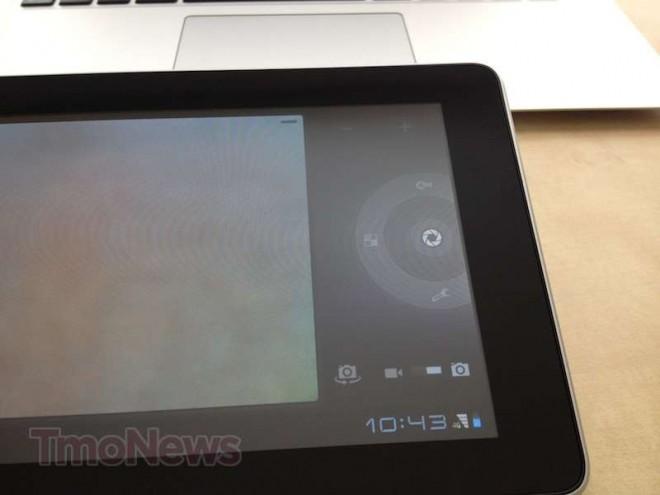 The Camera interface on the Springboard is fairly basic. There are a few adjustments that can be made such as the zoom level, resolution and white balance. The shutter delay is about two seconds for the camera to focus before taking the shot. All in all, the camera was a mixed bag with some images showing accurate colors and looking beautiful on the IPS display and other images looking washed out. The fact of the matter is that this is a tablet so your image taking is likely to be minimal. For that matter, the camera is perfectly good at what it’s supposed to do. I don’t imagine a scenario in which anyone would mistake this for a full-time shooter.
The Camera interface on the Springboard is fairly basic. There are a few adjustments that can be made such as the zoom level, resolution and white balance. The shutter delay is about two seconds for the camera to focus before taking the shot. All in all, the camera was a mixed bag with some images showing accurate colors and looking beautiful on the IPS display and other images looking washed out. The fact of the matter is that this is a tablet so your image taking is likely to be minimal. For that matter, the camera is perfectly good at what it’s supposed to do. I don’t imagine a scenario in which anyone would mistake this for a full-time shooter.
The camera fails in darkly lit situations but, then again, I can’t imagine a time in which I’ll be using the camera in a darkly lit situation. The same goes for the 720p video capture feature. Sound quality was just ok and the overall video just didn’t impress. Again, if you’re buying a tablet with the idea that video capture will impress, your expectations are far too high. These are additions to tablet that are necessary, but I don’t envision them being used for anything that resembles serious use. Viewing pictures on the tablet is a great experience but taking them is just so-so.
In any event, the Springboard has a perfectly good camera experience overall for a tablet but we wouldn’t recommend using this as your only shooter, no matter how “pocket- friendly” a 7” tablet can feel.
Note: A few more pictures are in the gallery below.
Network and Battery Life:
The Springboard is rated for 7 hour talk time and 12 days of standby time thanks to its 4100mAh battery. During my two plus weeks of testing which included plenty of web browsing, Netflix watching and app downloading, I was able to continuously hit that 7 hour mark. Sometimes it was slightly below that but almost every time it hit well above 6 hours of usage.
Download speeds were perfectly respectable but not exemplary for a tablet theoretically capable of hitting 14.4Mbps on T-Mobile’s 4G HSPA+ network. I somehow managed to lose my image of the first round of speed tests I took when I first received the Springboard demo so some hurried speed tests before shipping it back revealed speeds ranging from 2.7Mbps to 7.53Mbps. Other speed tests were somewhere in between those two numbers consistently which made for pleasant but not screaming fast web browsing. Viewing videos on both Netflix and YouTube were stutter free so, while the speeds I received weren’t anything to brag about, they more than sufficed for my daily needs.
Conclusions:
I have to admit as I think back that I’m torn about how I feel about the Springboard overall. As a 7” tablet I think it has a great screen, good overall physical feel and good battery life. The real question is…can I recommend it? The answer is a little mixed. At first glance and judging by the overall tone of my review, I’d say yes, I’d happily recommend it. The flipside is that I have a problem recommending it because of the confusing pricing breakdown T-Mobile has attached to it.
At first glance the Springboard is $179.99 after rebate, a price that would make this tablet a steal. The actual price of the Springboard however, is a $179.99 down payment after a $50 mail-in-rebate. That down payment is followed by 20 interest-free monthly payments of $10. In other words, you’re paying $380 after the $50 mail-in-rebate and I have a harder time recommending the Springboard at that price. It’s not a bad deal. It’s just harder to recommend as the price creeps up, especially considering the value of the Nook Tablet and Amazon Kindle. Yes, the Springboard offers 4G connectivity but then you’re adding in a mobile broadband plan starting at $29.99 per month and your total cost of ownership for the Springboard becomes over $1100 during the two-year contract period. That’s a hard sell and it’s one of the reasons I see carrier-tied tablets not taking off as much as the carriers expected them to do. Yes, a tablet with only Wi-Fi connectivity is limited in its traveling capability but your total cost of ownership is often 1/3 or less than the overall cost of a carrier-tied tablet. The real question becomes how much do you need 4G data with your tablet. If the answer is “I need it for business, personal or I just want it” than this is a great tablet to look at. If you can’t see yourself using 4G more than once or twice a month, paying at least $29.99 for a MBB plan can seem quite excessive.
The other alternative is to simply buy the tablet for $430 off contract and utilize T-Mobile’s affordable pay-as-you-go data plans on the occasion you do need to travel and do want 4G connectivity. It would be a lot easier to get excited about the Springboard if the $180 price tag didn’t include a two-year contract. If the Kindle Fire and Nook Tablet pricing have taught us anything, there is a market at that price so long as you understand what you are buying. The Nook and the Amazon model are more limited with their own layered software over Android making the full Android version of the Springboard appealing. That being said, you may feel like you get a better value with the Kindle Fire or Nook Tablet.
Of course, the ultimate decision to buy is up to you and we feel that you will be getting at least some bang for your buck with the Springboard. You just need to really consider the total cost of ownership against how much you’ll actually use 4G data. If the answer to the question is that you’ll use it a lot, than the Springboard with its ultra-portable size, beautiful screen and consistent speeds should be given a hard look.

